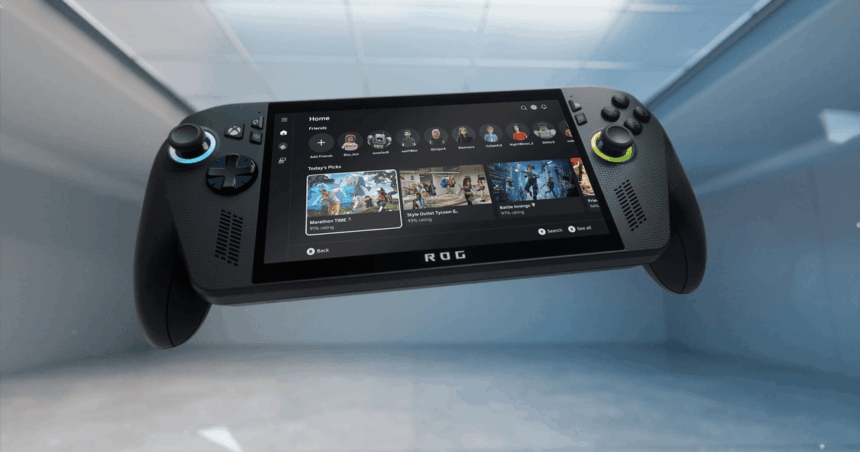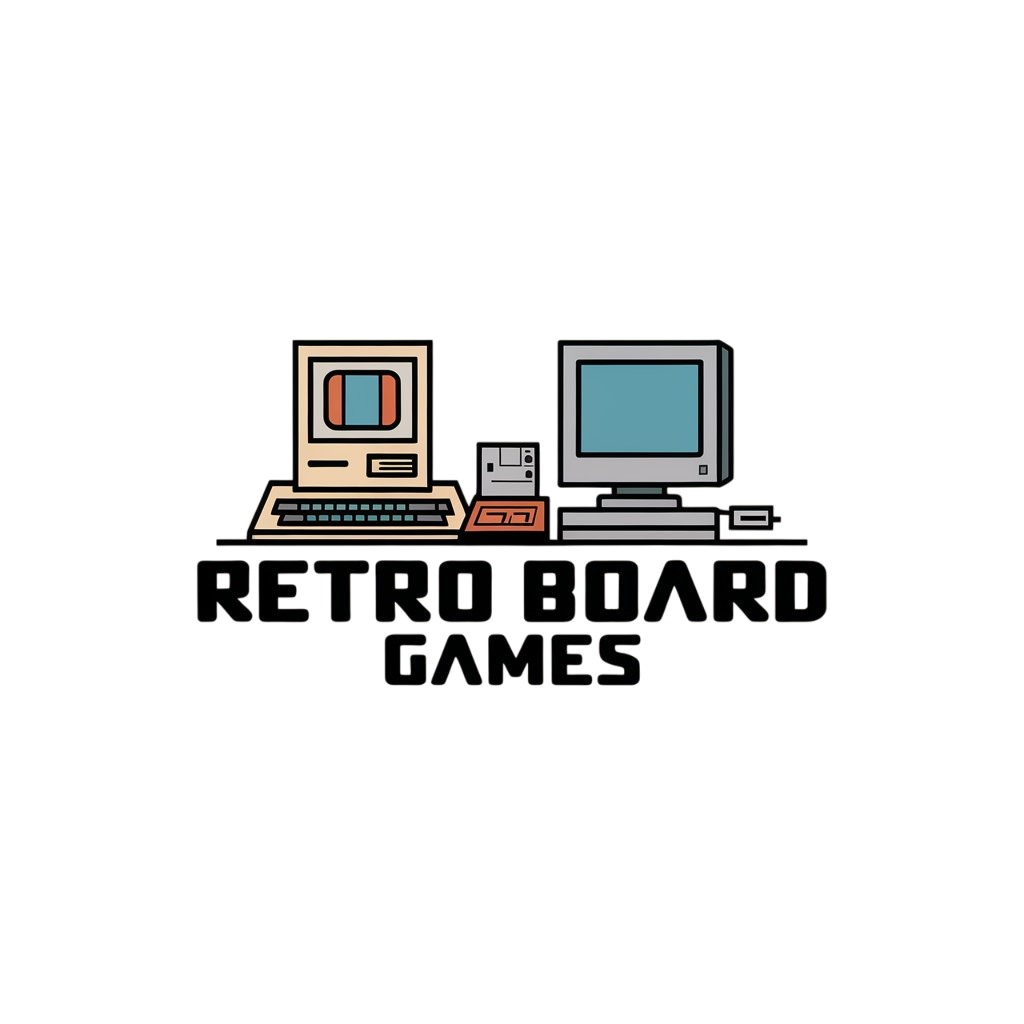After reports that Microsoft is “sidelining” its own first-party developed handheld, the new Xbox Showcase revealed two new mobile devices – Xbox Ally and Xbox Ally X. These machines are hardware collaborations with Asus, bringing Xbox hardware design ideas to the table in combination with a revamped version of Windows that puts gaming first. There are profound, welcome changes here – but one big question needs to be addressed. Is this the first new Microsoft offering no backwards compatibility with the Xbox digital library? Is this an Xbox that doesn’t play Xbox console games? If so, this is a bump in the road in Microsoft’s journey forward – and must be addressed.
First up, let’s examine system specifications on the new devices. From a Digital Foundry perspective, the most interesting offering is the Xbox Ally X, which is effectively an evolution on the device that I’d rank as the current best PC handheld – the Asus ROG Ally X. The form factor gets larger, the Xbox handles, impulse triggers and Xbox button are added and the AMD Z1 Extreme processor is swapped out for its revised Z2E, based on the most recent Strix Point architecture. 24GB of RAM is maintained from ROG Ally X to Xbox Ally X, but with a speed bump to 8000MT/s. A generous 80Wh battery completes the package.
It’s interesting to note that Microsoft and Asus have opted for silicon that retains the NPU (neural processing unit) from the original Strix Point design, when Z2 Extreme variants without the NPU active are specified. It’ll be interesting to see what Microsoft does here, but a port of its AutoSR super resolution feature – which we’ve looked at in the past – would be an obvious technology to port. Frame generation at the expense of further latency would also be viable.
Next up, there’s the Xbox Ally, with a similar shell (no impulse triggers or USB4, however, plus a pared-back MicroSD slot) but substantially downgraded specifications. The Z2A processor is – in all likelihood – a re-spin of the Aerith chip at the heart of the Steam Deck. It reportedly has the ability to hit 20W over Deck’s 15W and has compatibility with faster 8533MT/s memory, but on the latter point at least, only 6400MT/s memory is in place. Total system memory is a pared back 16GB LPDDR5X. Bearing in mind how many triple-A titles are struggling on Steam Deck with similar specs, I’m having trouble reconciling this device with Microsoft’s claims that it’ll run triple-A games. I think that putting out this hardware is a big mistake, but I’d love to be proven wrong.
Both devices have the same screen as the original Asus ROG Ally – a seven-inch 1080p 120Hz display with VRR support. While this screen is old and not particularly impressive in terms of key aspects like contrast and colour reproduction, VRR is a massive win. The problem with mobile graphics performance is how variable it is, so any hardware that smooths off performance issues is worth having. This – in combination with its massive battery – is why the Ally X is my favoured PC handheld, for now.
On the hardware side, there is nothing here that is particularly surprising, especially in the wake of recent leaks, but it is highly difficult to take the non-X Ally seriously in a world where the much more potent Z1 Extreme is available in devices like the original Ally and the Lenovo Legion Go, both of which are somewhat long in the tooth now and often subject to hefty discounting. On the software side, however, things are looking much more interesting.
What we’re looking at here is another step forward in Microsoft’s strategy to diversify the brand away from our traditional understanding of a console-led platform – a necessary step, but one with a number of challenges. Key to future plans is bringing together Windows and Xbox, which involves a substantial revamp to the Microsoft operating system. A big, bloated do-anything-for-anyone tool needs to be slimmed down for gamers and made more efficient for the growing handheld PC market. And if you’re efficient on handheld, the advantages transition over seamlessly to desktop – or console. Clearly, Microsoft has plans for this games-focused version of Windows, starting with compatibility with the original ROG Ally, Ally X and presumably other PC handhelds with similar silicon.
This new version of Windows doesn’t boot into the desktop, it boots into new Xbox software. Access to your PC digital library – and indeed other non-Xbox storefronts – is also seamlessly integrated, making it a one-stop shop for your games library. Intriguingly, the Asus Armory Crate (used for custom tweaking of the device) is also integrated into the Xbox Ally’s iteration of Windows. On a broader level, xinput compatibility for functions within Windows such as PIN input and UAC prompts is also baked into the new version of the OS, replacing prior feeble and unreliable third party attempts to get this working.
Windows itself has apparently been “debloated” to a certain extent, offering up more system memory for the games themselves, while sleep time is expected to increase by a factor of 3x based on efficiency gains made by the Windows team.
All of this is a crucial step forward in unifying Windows and Xbox – which in itself is a fundamental element of the “this is an Xbox” strategy, but there is another big challenge facing Microsoft – integrating existing Xbox digital libraries into Windows. Microsoft has tens of millions of active users within its existing ecosystem that cannot be left behind – and each and every one of those users should expect to be able to access their Xbox libraries on any Xbox device. Right now at least, the Xbox Ally devices cannot run native Xbox games on the console. The cloud service could act as a back-up of sorts by streaming Series S games (and prior Xbox consoles via backwards compatibility) but the whole point of a handheld is a mobile device you can take anywhere – not take anywhere that only has robust internet access.
The final piece of the puzzle with the transition into a Windows/Xbox hybrid utopia has to be a comprehensive backwards compatibility set-up, but how viable is that for these handhelds? On the face of it, support for OG Xbox and Xbox 360 titles should not be too difficult. Both of these machines effectively max out at 720p resolution, so both Xbox Ally and Ally X have the GPU power to get the job done. On the CPU side, the Ryzen CPU cores in the new hardware are generations beyond the Jaguar cores in Xbox One which – remarkably – delivered higher game performance than the original hardware, even in the case of Xbox 360’s original PowerPC code. All that remains are potential licensing difficulties in running console games on a PC, the extent of which is known only to Microsoft.
Further questions remain. Can Ally and Ally X handle the Xbox One generation titles? And what about the ninth generation Series consoles? This is where things get trickier – we’re looking at Microsoft moving the modern Xbox virtual machines over to Windows and at this point, the question is the extent to which the performance is there in these handhelds to run those games natively. In theory, based on what the Steam Deck achieved, Xbox One-like performance seems viable – and should be very easy for the Z2 Extreme.
But what about Xbox Series S? I’d rule that out completely on both processors, meaning some other kind of solution would be required. Subbing in PC versions would be no problem for Microsoft first-party titles, especially with Play Anywhere in place to synchronise game progress – but what about third-party games bought within the Xbox ecosystem? Some kind of agreement with publishers to use their PC versions? It sounds like a nightmare but ultimately, Microsoft is going to need some kind of solution to bring consoles games into this new hybrid Xbox/Windows ecosystem.
However, perhaps the hottest topic for speculation concerns price-point. The non-X Ally features Steam Deck-equivalent silicon, so the concept of selling this at anything more than a similarly equipped Deck is – in my opinion – out of the question. That leaves the Xbox Ally X – a further enhanced version of the existing Asus ROG Ally X, which costs $800, making it very much a premium device. Unless Asus is willing to lose some of its margin, or Microsoft calls in some favours with AMD and other suppliers, it’s hard to imagine that it will be any cheaper.
There are many outstanding questions then and not too many answers based on my pre-brief and the various YouTube videos I’ve seen based on what seems to have been a highly limited hands-on event in Los Angeles last week. Microsoft has been very careful in how its transition strategy has been communicated ever since the infamous “four games” business update and it looks like we’re going to need to wait some time to get full details on the Xbox Ally and Ally X. I’ve been following the evolution of gaming handhelds since the Steam Deck arrived – but Xbox Ally is something different, something important. It may well be our first proper look at how Microsoft envisages the future of Xbox – and I can’t wait to check it out.






